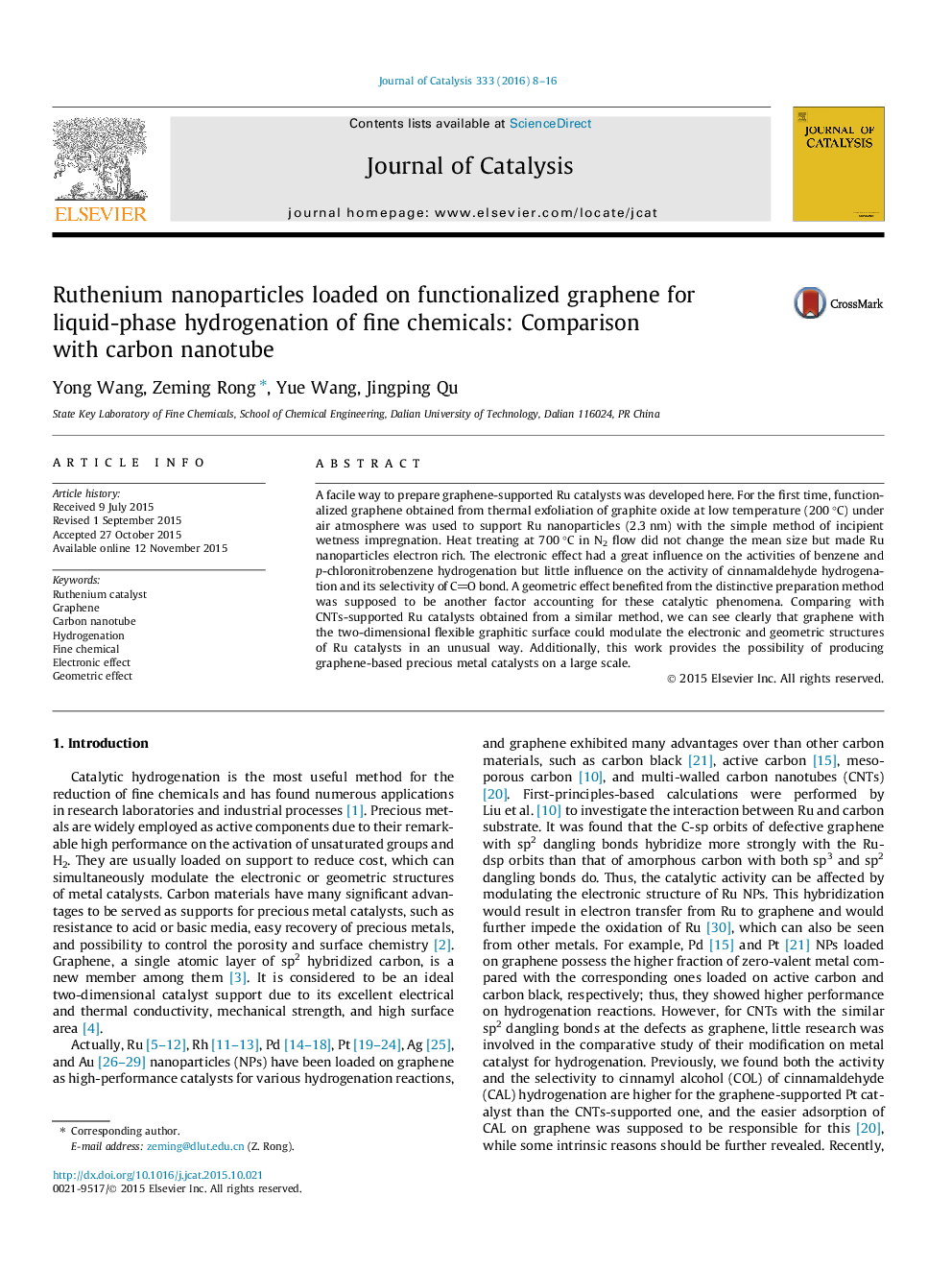| Article ID | Journal | Published Year | Pages | File Type |
|---|---|---|---|---|
| 60652 | Journal of Catalysis | 2016 | 9 Pages |
•A facile way to prepare graphene-supported Ru catalysts was developed.•Ru NPs loaded on TEGO should be more flat than that loaded on CNTs.•TEGO could make Ru more electron-deficient than CNTs do.•Both aspects doubled the TOFs on hydrogenation of benzene and CAL.•Yet it presented a two times lower activity for p-CNB hydrogenation.
A facile way to prepare graphene-supported Ru catalysts was developed here. For the first time, functionalized graphene obtained from thermal exfoliation of graphite oxide at low temperature (200 °C) under air atmosphere was used to support Ru nanoparticles (2.3 nm) with the simple method of incipient wetness impregnation. Heat treating at 700 °C in N2 flow did not change the mean size but made Ru nanoparticles electron rich. The electronic effect had a great influence on the activities of benzene and p-chloronitrobenzene hydrogenation but little influence on the activity of cinnamaldehyde hydrogenation and its selectivity of CO bond. A geometric effect benefited from the distinctive preparation method was supposed to be another factor accounting for these catalytic phenomena. Comparing with CNTs-supported Ru catalysts obtained from a similar method, we can see clearly that graphene with the two-dimensional flexible graphitic surface could modulate the electronic and geometric structures of Ru catalysts in an unusual way. Additionally, this work provides the possibility of producing graphene-based precious metal catalysts on a large scale.
Graphical abstractFigure optionsDownload full-size imageDownload high-quality image (193 K)Download as PowerPoint slide
